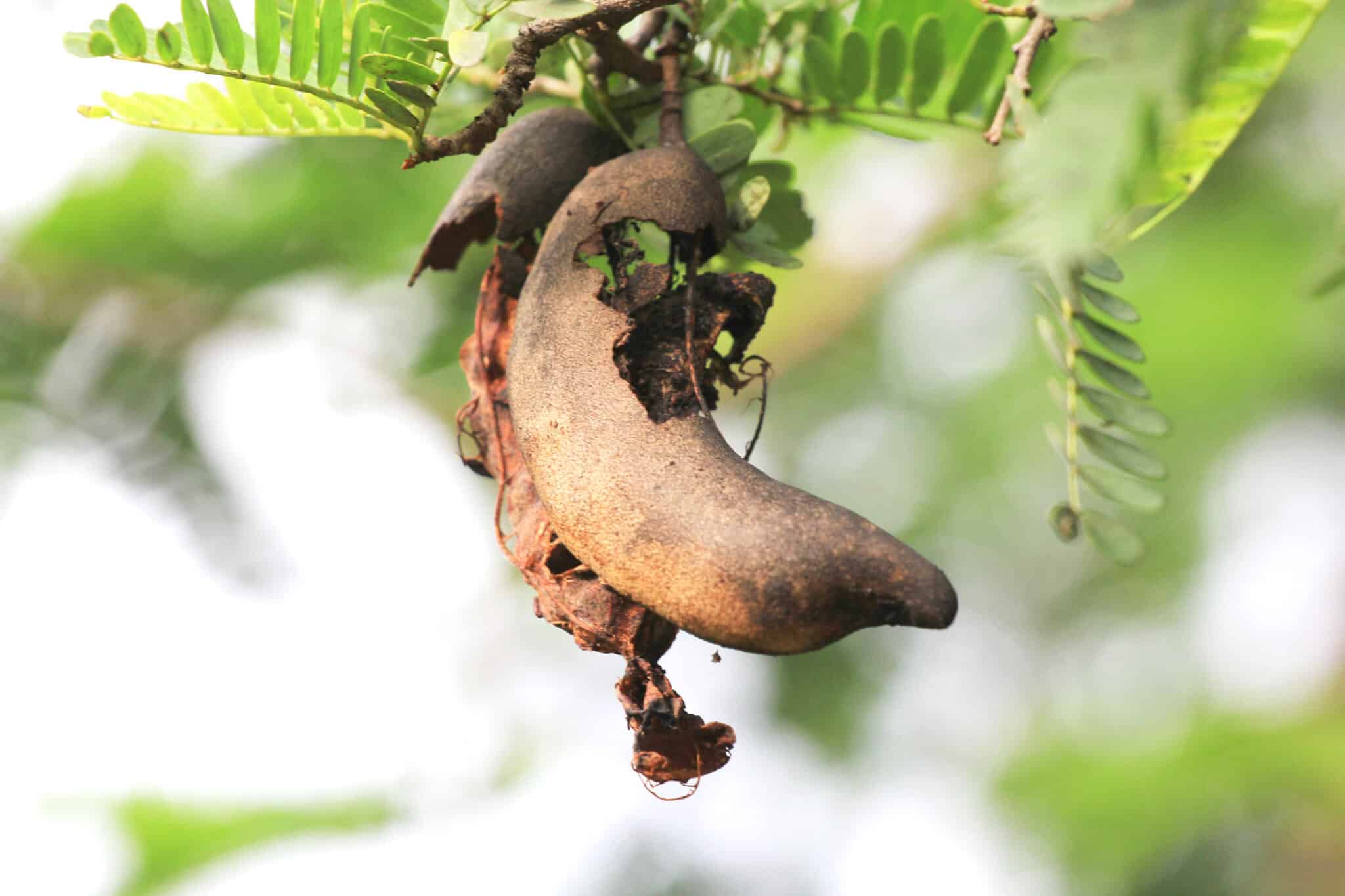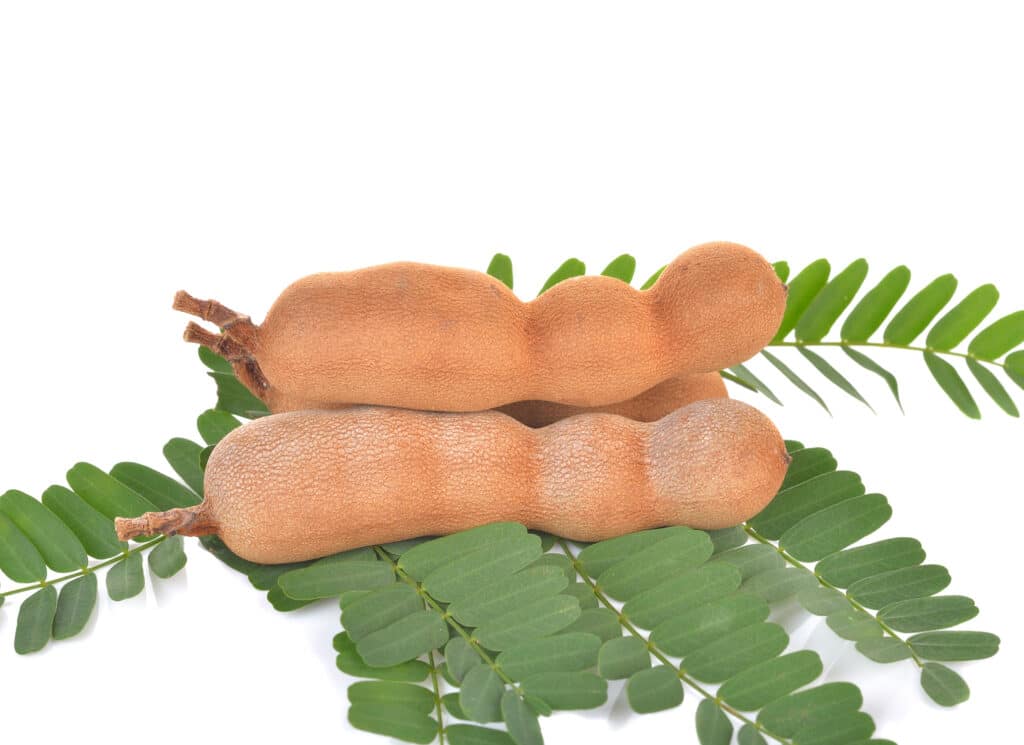Tamarind – Tamarindus indica grows well in Hawaii’s tropical climate and offers beauty, flavor, and versatility. Gardeners and landscapers plant it for its unique appearance and reliable harvests. The tree produces long, brown pods filled with tangy pulp that people use in cooking, drinks, and traditional remedies. Tamarind – Tamarindus indica continues to gain popularity across the Hawaiian Islands.
This tree provides multiple benefits. Its wide canopy delivers shade, while its flowers and leaves attract pollinators and birds. Locals harvest the pulp to create sauces, teas, and natural health products. Hawaiians value Tamarind – Tamarindus indica for both its practical uses and its visual appeal.
Gardeners appreciate its low maintenance needs and drought tolerance. The tree adapts well to different soils and survives with minimal watering once established. It improves soil health and helps prevent erosion in coastal or dry regions. People in Hawaii plant Tamarind – Tamarindus indica to support sustainable landscapes.
This tree serves both people and nature. It feeds wildlife, provides shelter, and supports biodiversity. With the right planting and care, it can thrive for decades. Anyone seeking a lasting, productive, and attractive tree in Hawaii should consider Tamarind – Tamarindus indica.
Tamarind – Tamarindus indica Details
Tamarind – Tamarindus indica grows as a slow-growing, long-lived tree that can reach heights of up to 80 feet. It forms a broad, rounded canopy with fine, feathery foliage that creates dense, cooling shade. The bark appears dark brown and rough, adding to the tree’s distinct, aged appearance. Tamarind develops thick, curved pods that hold the flavorful pulp used in many culinary traditions.
The tree produces yellowish flowers with red streaks that attract bees and butterflies throughout the blooming season. Its glossy, compound leaves fold at night and during drought to conserve moisture. Each pod contains a sticky, reddish-brown pulp and hard, flat seeds encased in a brittle shell. Growers and consumers highly value Tamarind for its unique look and many uses.
Hawaiian growers appreciate the tree’s adaptability and resilience in varying soil types and climates. Once established, it resists strong winds and tolerates drought conditions well. The tree grows slowly but steadily, becoming more productive as it matures. Farmers and homeowners choose Tamarind for its dependability.
This tree plays an essential role in local ecosystems while serving cultural, culinary, and landscaping needs. People across Hawaii continue planting Tamarind – Tamarindus indica for its rich value and natural beauty.
Varieties and Cultivars
Tamarind – Tamarindus indica includes several varieties, each offering unique traits in flavor, size, and growing behavior. Most varieties produce sour pulp, while a few cultivated types yield sweeter, milder fruit. The “Sweet Tamarind” variety grows well in tropical climates like Hawaii and produces less acidic pulp. Growers in Hawaii often choose Tamarind – Tamarindus indica varieties based on culinary needs and site conditions.
The Manila Sweet cultivar offers softer pulp and a smoother taste, making it ideal for snacking and desserts. The Thai Sweet variety also thrives in tropical regions, producing long pods with high pulp content. Though less common, dwarf tamarind cultivars exist for smaller landscapes or container gardening. Each Tamarind – Tamarindus indica variety has adapted to specific environments and user preferences.
Choosing the right cultivar depends on climate, space, and intended use. Gardeners in Hawaii typically select sweet or balanced-flavor varieties to suit local tastes. Nurseries across the islands offer grafted tamarind trees that ensure consistent fruit quality. Hawaiians often plant Tamarind – Tamarindus indica cultivars to meet both personal and commercial needs.
No matter the type, each variety offers the same resilience and charm. Cultivating Tamarind – Tamarindus indica ensures flavorful fruit and lasting landscape value in Hawaii.

Best Time to Plant
The best time to plant Tamarind – Tamarindus indica in Hawaii is during the early rainy season, from March to May. Planting during this period ensures consistent moisture, helping young trees develop strong roots quickly and efficiently. Warm soil temperatures also promote faster root growth and better nutrient absorption. Gardeners across Hawaii prefer starting Tamarind – Tamarindus indica during this season to guarantee better establishment.
Avoid planting during peak dry months, as young saplings need regular watering and may struggle in dry, hot conditions. During the rainy season, natural rainfall reduces the need for constant irrigation and supports steady growth. By timing planting with rainfall, growers can reduce transplant shock and improve long-term success. Hawaiians recognize that well-timed Tamarind – Tamarindus indica planting leads to healthy, vigorous trees.
Choose a planting day with mild weather and overcast skies, which helps prevent immediate sun stress. Prepare the planting site beforehand, ensuring soil is loosened and well-draining for quick root penetration. Keep newly planted trees mulched and protected from wind until they’re fully established. These extra steps boost the performance of Tamarind – Tamarindus indica from day one.
Starting with the right timing gives your tree a strong foundation. For reliable results, plant Tamarind – Tamarindus indica when conditions align naturally.
Growing Conditions
Tamarind – Tamarindus indica thrives in warm, humid climates with plenty of sun and well-drained soils. Hawaiian landscapes offer excellent growing conditions with consistent temperatures and seasonal rainfall that support healthy tree development. The tree performs best in full sunlight, needing at least six hours of direct sun daily. Growers across Hawaii find Tamarind – Tamarindus indica well-suited to coastal and inland locations alike.
Although it prefers deep, loamy soil, the tree adapts to sandy or rocky terrain if drainage remains adequate. Avoid areas with standing water or heavy clay, as the roots require air circulation to stay healthy. Once established, tamarind tolerates drought and salinity, making it ideal for drier or coastal zones. Landscapers rely on Tamarind – Tamarindus indica to withstand Hawaii’s variable conditions.
This tree handles occasional wind and salt spray, especially when planted as a windbreak or along shorelines. However, young trees need shelter until they develop sturdy trunks and branches. Proper placement ensures long-term success, particularly in exposed or high-traffic areas. Hawaii’s natural environment consistently supports Tamarind – Tamarindus indica with minimal intervention.
Healthy trees begin with the right site. In Hawaii, thoughtful placement allows Tamarind – Tamarindus indica to flourish for generations.
Planting Instructions
Planting Tamarind – Tamarindus indica correctly ensures healthy growth and strong establishment in Hawaiian landscapes. Start by choosing a sunny, sheltered spot with well-drained soil and enough room for the tree to spread. Dig a hole twice the width of the root ball and equal in depth, ensuring the roots sit level with the ground. Gardeners across Hawaii follow these steps when planting Tamarind – Tamarindus indica.
Remove the sapling gently from its container, taking care not to disturb the root system more than necessary. Position the tree upright in the hole, then backfill with native soil mixed with compost to enrich nutrients. Water thoroughly after planting to settle the soil and eliminate air pockets around the roots. Mulch the base to retain moisture and protect the young Tamarind – Tamarindus indica from weeds.
Keep the mulch a few inches away from the trunk to prevent rot or fungal issues. Stake the tree if necessary, especially in windy areas, until it develops strong support. Water regularly during the first year until the roots fully establish and growth becomes steady. Following these guidelines ensures Tamarind – Tamarindus indica gets a healthy start.
Plant with care, and your tree will reward you. Hawaiians see success when they start Tamarind – Tamarindus indica the right way.
Care and Maintenance
Tamarind – Tamarindus indica requires consistent care during its early years to ensure long-term health and productivity. Water the tree deeply every seven to ten days during dry periods, especially in its first two years. Once established, it becomes drought-tolerant and only needs occasional watering during extended dry spells. Hawaiian gardeners often rely on rainfall to sustain Tamarind – Tamarindus indica.
Fertilize the tree once or twice a year using a balanced, slow-release fertilizer to support leaf growth and fruit production. Apply mulch regularly to conserve soil moisture, reduce weed growth, and regulate root temperature. Prune lightly each year to remove dead or damaged branches and to shape the canopy as desired. This routine keeps Tamarind – Tamarindus indica healthy and looking its best.
Watch for signs of stress such as yellowing leaves or reduced growth, which may indicate nutrient deficiencies or overwatering. Check the soil moisture and adjust watering as needed to maintain optimal conditions. Strong winds can damage young trees, so install windbreaks or supports until trunks develop. Careful maintenance strengthens Tamarind – Tamarindus indica and prevents common problems.
Consistent attention pays off over time. With the right care, Tamarind – Tamarindus indica can thrive and produce fruit for decades in Hawaii.

Common Problems and Solutions
Tamarind – Tamarindus indica remains a low-maintenance tree, but it can occasionally face issues in Hawaii’s diverse growing conditions. Regular observation and early intervention make a big difference. Below are common problems growers encounter and simple, effective solutions that protect Tamarind – Tamarindus indica trees:
-
Sap-sucking insects
Scale, mealybugs, and aphids commonly feed on young shoots, weakening growth and spreading disease. Control outbreaks using neem oil or insecticidal soap, applying during early morning hours for best results.
-
Fungal diseases
High humidity and poor air circulation can lead to fungal problems like leaf spot, anthracnose, or powdery mildew. Improve airflow through selective pruning, avoid overhead watering, and treat infections with organic fungicides when needed.
-
Rodent activity
Rats and mice may chew on bark or eat fallen pods, especially in dense or unkempt areas. Keep the base of the tree clean, remove fallen fruit promptly, and consider installing tree guards if damage persists.
-
Bird damage
Birds peck at ripe pods, which can result in cosmetic blemishes or early fruit drop. Use bird netting or reflective tape if the issue becomes excessive during harvest season.
-
Wind damage
Young trees with soft wood or shallow roots may snap during strong Hawaiian winds. Stake young trees securely, especially in exposed areas, until trunks develop the strength to stand unsupported.
-
Nutrient deficiencies
Yellowing leaves may signal a lack of nitrogen or other key nutrients. Apply a slow-release, balanced fertilizer in early spring and mid-summer to maintain lush foliage and pod production.
-
Overwatering or poor drainage
Tamarind roots dislike soggy soil and may rot if water collects around the base. Always plant in well-drained soil and adjust irrigation based on rainfall and season.
-
Pest buildup in mulch
Thick mulch can harbor insects or promote fungal growth if placed too close to the trunk. Keep mulch two to three inches away from the bark to maintain airflow and prevent trunk rot.
With consistent attention and timely action, growers in Hawaii can easily manage issues. Healthy, well-cared-for Tamarind – Tamarindus indica trees reward with longevity, beauty, and fruit.
Uses and Landscaping Tips
Tamarind – Tamarindus indica offers value in both practical and ornamental landscaping across Hawaii’s diverse environments. Homeowners often plant it as a shade tree thanks to its wide canopy and graceful foliage. The tree adds tropical beauty and structure to gardens, parks, and larger properties. Hawaiians admire Tamarind – Tamarindus indica for its aesthetics and multiple functional benefits.
The tree’s pods provide pulp used in sauces, beverages, candies, and traditional remedies. Chefs and home cooks alike appreciate its distinctive tangy flavor. The seeds, leaves, and bark also serve roles in cultural practices and natural wellness. These qualities make Tamarind – Tamarindus indica a valuable resource beyond just its appearance.
In landscapes, the tree works well as a specimen plant or part of a mixed border. It tolerates coastal winds, saline soils, and extended dry periods once established. This resilience makes it a perfect fit for sustainable, low-maintenance garden designs. Hawaiians often feature Tamarind – Tamarindus indica in food forests or agroforestry layouts.
Add mulch beneath the canopy to enhance soil health and moisture retention. With thoughtful placement and care, Tamarind – Tamarindus indica becomes a stunning, productive focal point in any Hawaiian garden.
Propagation Methods
Tamarind – Tamarindus indica can be propagated through seeds, grafting, or air layering, depending on the grower’s goal and available resources. Most home gardeners in Hawaii start with seeds due to their availability and ease of handling. Soak seeds overnight to speed germination, then plant in well-drained soil under warm, sunny conditions. Many successful trees across Hawaii began as seed-grown Tamarind – Tamarindus indica.
Grafting is ideal for preserving specific cultivars or speeding up fruit production, though it requires more skill and tools. Grafted trees bear fruit sooner and maintain consistent pod quality, especially in sweet varieties. This method ensures genetic reliability for growers looking to expand or commercialize their orchards. Hawaiians often graft Tamarind – Tamarindus indica when uniform harvests are needed.
Air layering works for those wanting to clone mature branches without disturbing the mother tree. Wrap a moist rooting medium around a cut branch, then wait for roots before transplanting. Though slower than seed propagation, this method guarantees a genetic match to the parent Tamarind – Tamarindus indica.
Choose the method that fits your space, time, and experience level. Any approach, when done properly, ensures healthy Tamarind – Tamarindus indica trees thrive in Hawaiian gardens.
Environmental Impact and Benefits
Tamarind – Tamarindus indica provides meaningful environmental benefits that make it an asset in Hawaii’s tropical ecosystems. Its deep roots prevent soil erosion on sloped or coastal lands, helping preserve land quality during heavy rains. The tree improves soil health by fixing nutrients and maintaining moisture through its dense canopy. Hawaiians rely on Tamarind – Tamarindus indica to stabilize landscapes naturally.
The tree offers habitat and food for birds, insects, and small mammals, encouraging biodiversity across the islands. Its flowers attract pollinators like bees, supporting nearby crops and native plant life. Fallen pods and leaves decompose quickly, enriching the soil and reducing waste. Gardeners using Tamarind – Tamarindus indica help foster more resilient, life-filled gardens.
Tamarind trees absorb carbon dioxide and release oxygen, improving air quality and aiding in climate regulation. In urban areas, they provide shade that cools surrounding spaces and reduces the heat island effect. Their long lifespan means these benefits continue for decades with little maintenance. Hawaiians planting Tamarind – Tamarindus indica make lasting contributions to sustainability.
This tree is a true environmental ally. By planting Tamarind – Tamarindus indica, Hawaiians help restore balance between cultivated landscapes and the surrounding natural world.
Conclusion
Tamarind – Tamarindus indica stands out as a tree of immense value, beauty, and sustainability across Hawaii’s varied landscapes. It offers fruit, shade, and environmental benefits while asking for minimal care once fully established. Gardeners and landscapers appreciate its resilience, ornamental appeal, and broad utility in both rural and urban settings. Hawaiians continue planting Tamarind – Tamarindus indica for its long-term rewards and ecological contributions.
This tree’s versatility supports culinary traditions, soil health, and local ecosystems without requiring intensive inputs or resources. Its ability to thrive in coastal, dry, or rocky areas makes it an excellent option for challenging planting sites. Farmers and homeowners alike depend on its dependable growth and steady production. Planting Tamarind – Tamarindus indica also aligns with sustainable living goals in tropical environments.
Whether grown for its tangy fruit, shade potential, or environmental benefits, the tree delivers lasting value for generations. It adapts to Hawaii’s climate with ease and continues to reward those who care for it. Gardeners who follow proper planting and care steps enjoy reliable success with Tamarind – Tamarindus indica.
In every setting, this remarkable tree makes a positive impact. Hawaiians recognize Tamarind – Tamarindus indica as both a practical resource and a natural treasure.

